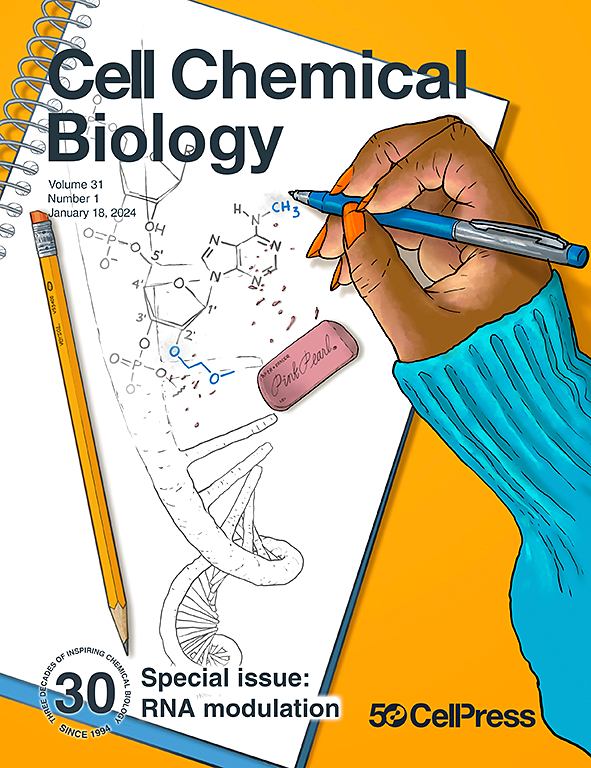Targeted degradation of CDK9 potently disrupts the MYC-regulated network
IF 6.6
1区 生物学
Q1 BIOCHEMISTRY & MOLECULAR BIOLOGY
引用次数: 0
Abstract
CDK9 coordinates signaling events that regulate transcription and is implicated in oncogenic pathways, making it an actionable target for drug development. While numerous CDK9 inhibitors have been developed, success in the clinic has been limited. Targeted degradation offers a promising alternative. A comprehensive evaluation of degradation versus inhibition is needed to assess when degradation might offer superior therapeutic outcomes. We report a selective and potent CDK9 degrader with rapid kinetics, comparing its downstream effects to those of a conventional inhibitor. We validated that CDK9 inhibition triggers a compensatory feedback mechanism that dampens its anticipated effect on MYC expression and found that this was absent when degraded. Importantly, degradation is more effective at disrupting MYC transcriptional regulation and subsequently destabilizing nucleolar homeostasis, likely by abrogation of both enzymatic and scaffolding functions of CDK9. These findings suggest that CDK9 degradation offers a more robust strategy to overcome limitations associated with its inhibition.


CDK9的靶向降解可能会破坏myc调控的网络
CDK9协调调节转录的信号事件,并参与致癌途径,使其成为药物开发的可行靶点。虽然已经开发了许多CDK9抑制剂,但在临床中的成功仍然有限。有针对性的降解提供了一个有希望的替代方案。需要对降解与抑制进行综合评估,以评估降解何时可能提供更好的治疗结果。我们报道了一种具有快速动力学的选择性和有效的CDK9降解剂,并将其下游效应与传统抑制剂进行了比较。我们验证了CDK9抑制触发代偿反馈机制,该机制抑制了其对MYC表达的预期影响,并发现当降解时这种机制不存在。重要的是,降解在破坏MYC转录调控和随后破坏核仁稳态方面更有效,可能是通过废除CDK9的酶和支架功能。这些发现表明,CDK9降解提供了一种更强大的策略来克服与其抑制相关的限制。
本文章由计算机程序翻译,如有差异,请以英文原文为准。
求助全文
约1分钟内获得全文
求助全文
来源期刊

Cell Chemical Biology
Biochemistry, Genetics and Molecular Biology-Molecular Medicine
CiteScore
14.70
自引率
2.30%
发文量
143
期刊介绍:
Cell Chemical Biology, a Cell Press journal established in 1994 as Chemistry & Biology, focuses on publishing crucial advances in chemical biology research with broad appeal to our diverse community, spanning basic scientists to clinicians. Pioneering investigations at the chemistry-biology interface, the journal fosters collaboration between these disciplines. We encourage submissions providing significant conceptual advancements of broad interest across chemical, biological, clinical, and related fields. Particularly sought are articles utilizing chemical tools to perturb, visualize, and measure biological systems, offering unique insights into molecular mechanisms, disease biology, and therapeutics.
 求助内容:
求助内容: 应助结果提醒方式:
应助结果提醒方式:


